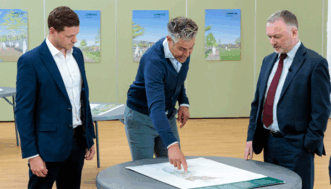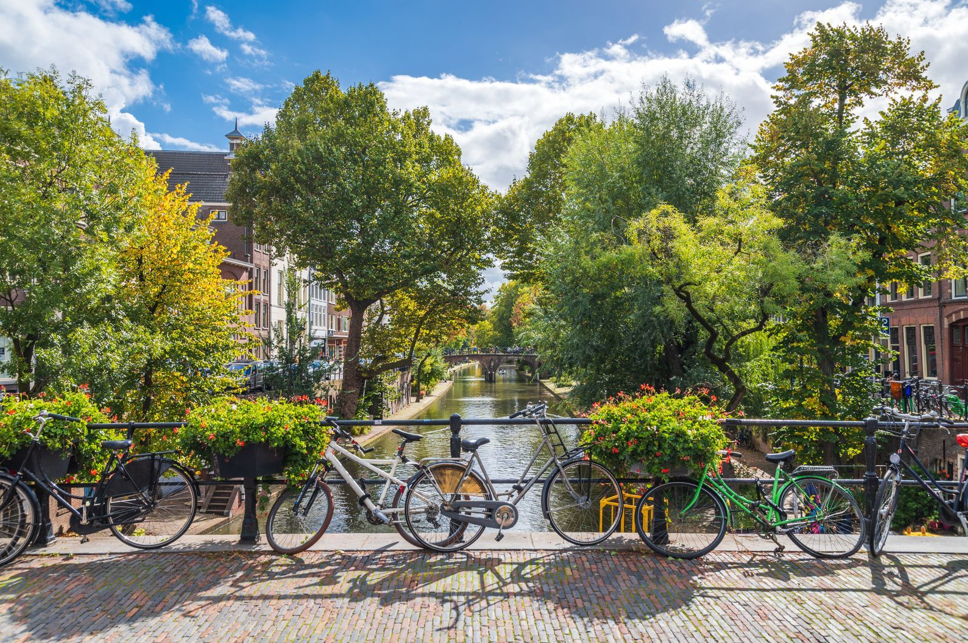
The Academy of Urbanism Congress 2025 – Utrecht: Healthy Urban Living

Five snapshot thoughts on the Netherlands, Utrecht and learnings from the AoU Congress:
1. Netherlands, Utrecht and Urbanism
The Dutch cities and towns that I had previously visited were, simply put, very liveable. Utrecht was very much in the same mould, and probably more impressive given its size.
It’s easy on the eye, has integrated travel options and amenities close to hand, and has a real buzz to the centre.
To paraphrase the mayor of Helsinki who spoke at Congress, Utrecht (and the Netherlands more generally) has the functionality of the Nordics and the way of life and outlook of Mediterranean countries. Things worked (let’s forget about the train strike during the event), getting about was easy, stress levels were low and in the evenings Utrecht’s streets were packed with streetside terraces and outdoor eating and drinking. It was easy to forget that we were at the same latitude as Ipswich and not in Spain or Italy.
It also inspires: I bumped into a British man who’d been in Utrecht with work for a while, and whilst there, his eyes have been opened to such an extent as to the impact that good urbanism has on your day-to-day life that he had decided to change careers and investigate moving into urbanism in some way.
Of course not everything is perfect, but there are some very clear lessons that can be learned and ideas that can be taken away and tweaked.
2. Cycling / People (who ride bikes)
Cycle paths everywhere (with priority), cycle storage, integration with trains and buses. You can drive, but why would you?
This didn’t just happen overnight and there’s a whole story and many books behind how this has been achieved over the last 40 plus years.
To me it’s been about putting liveability first. Yes, the Netherlands has advantages – it’s flat for a start. But they had to want this, and in many places had to retrofit. It needs a strong consistent vision and determination.
The outdoor living lifestyle described above would not be possible if the cars were the priority means of transport in design. And what do the under thirties want? More cycling infrastructure, and more equitable infrastructure please. This is not about us and them. This isn’t being done for cyclists to annoy the motorist. This is to make life better for people (who ride bikes and also, will in many cases own or use a car). ‘People who ride bikes, not cyclists’
3. Health
Health is embedded as a central thread across all Utrecht municipality departments, in other words it’s a key outcome consideration for all departments (housing, transport, sport, education etc.) and not just in the ‘health’ department. We learned that it’s a similar situation in Helsinki, where there is key cross department goals of increasing levels of everyday physical activity.
So very sensible.
4. Urbanists
Something that struck me very clearly was the sheer number of people I met or heard about who work for the regional of city government who are either urbanists or spatial planners. Not planners as we know them but fully embedded in their area and with a passion for urbanism and not just housing numbers. This links to point 5 below…
5. Collaboration
Working in the UK, the level of collaboration that is evident in all that the Dutch do is enviable. Yes, it stems from historic political structures, but it must be more than that too. There is strong collaboration between the different layers of government, but even more striking is the collaboration between the public and private sector, working together to deliver the best schemes for residents and the city.
The contrast came into focus on my first day back at work after Congress. We had been trying for some time to engage on a collaborative basis with a local authority in relation to sports, play and open space delivery at a large scheme (5,000 units) that is under construction. We have tried to invite them to work alongside us to help steer the direction, design and timing of the facilities we are going to deliver, to make sure it’s relevant, up to date and in line with resident needs. However, I heard that day that they (at a senior level) did not want to speak to us and simply stated that we must follow the prescribed guidelines set out which are now over 10 years out of date, and in our view come well short in delivering the best outcomes for the local population. We were willing to put in the time and effort to do better, but they were not.
The private sector can’t do it alone, nor can the public sector, so we need to work together collaboratively and move away from the process where a LPA simply marks your homework against outdated guidelines and then thinks that they have done their job.
Ben Phillips
Development Director and Place Lead

